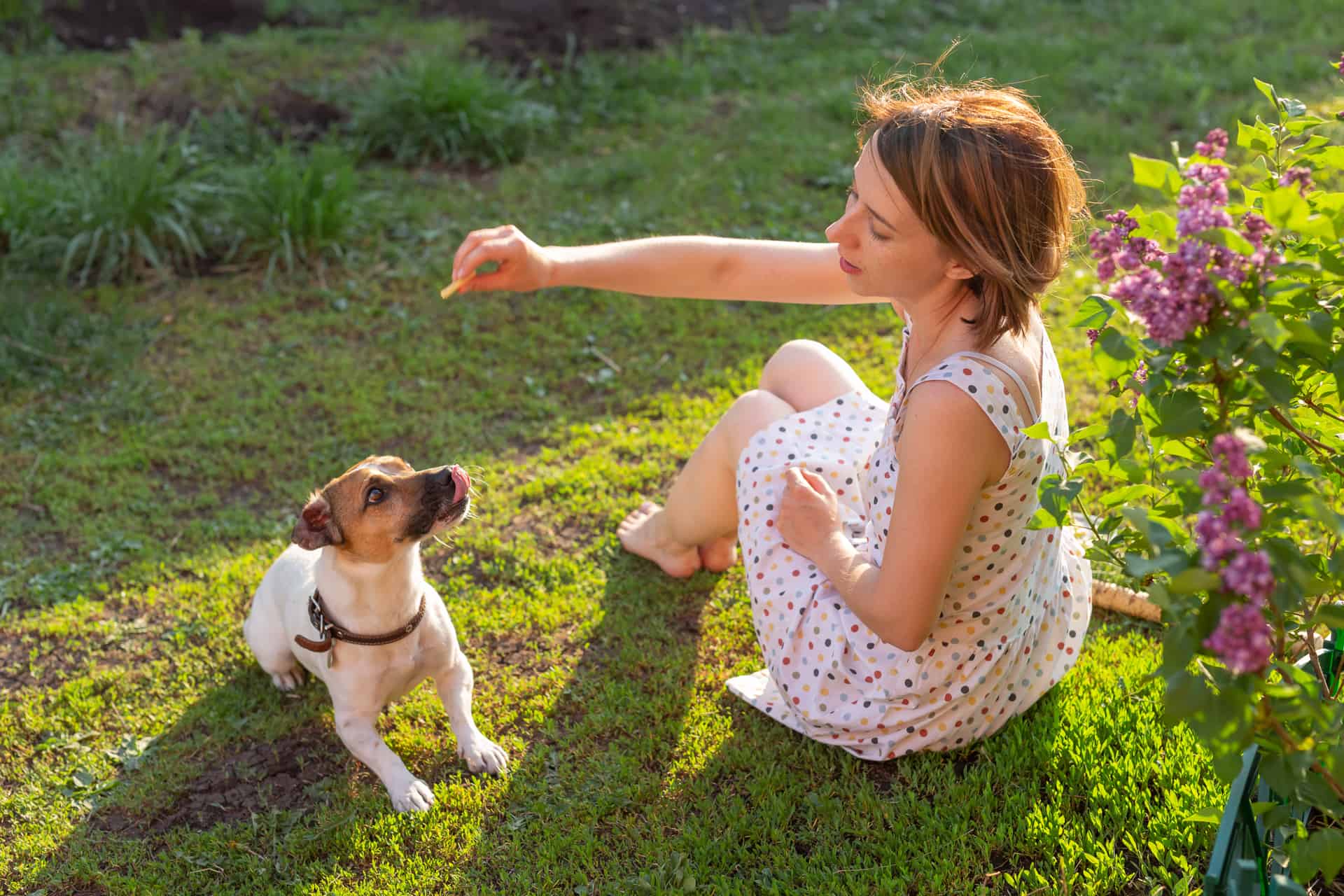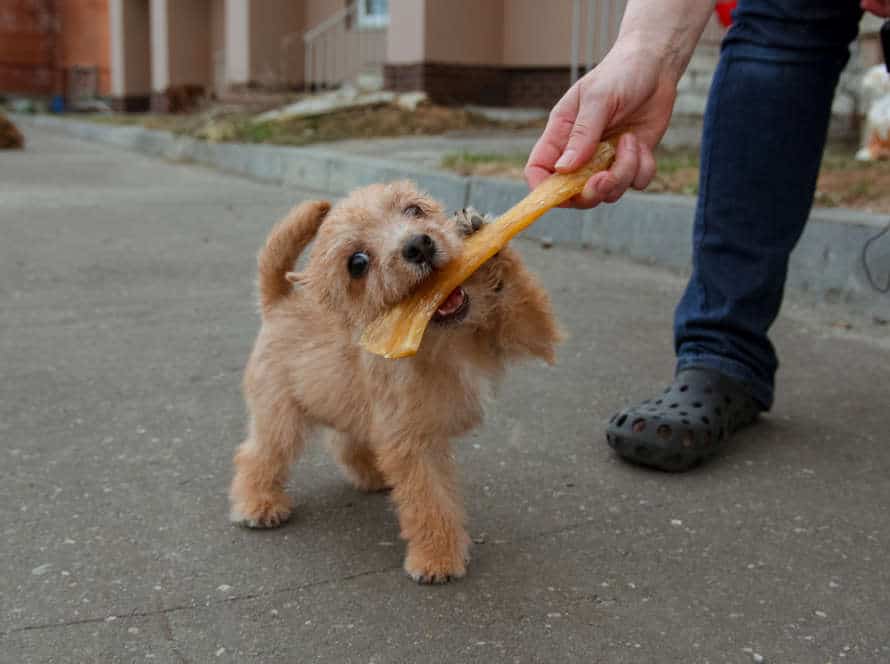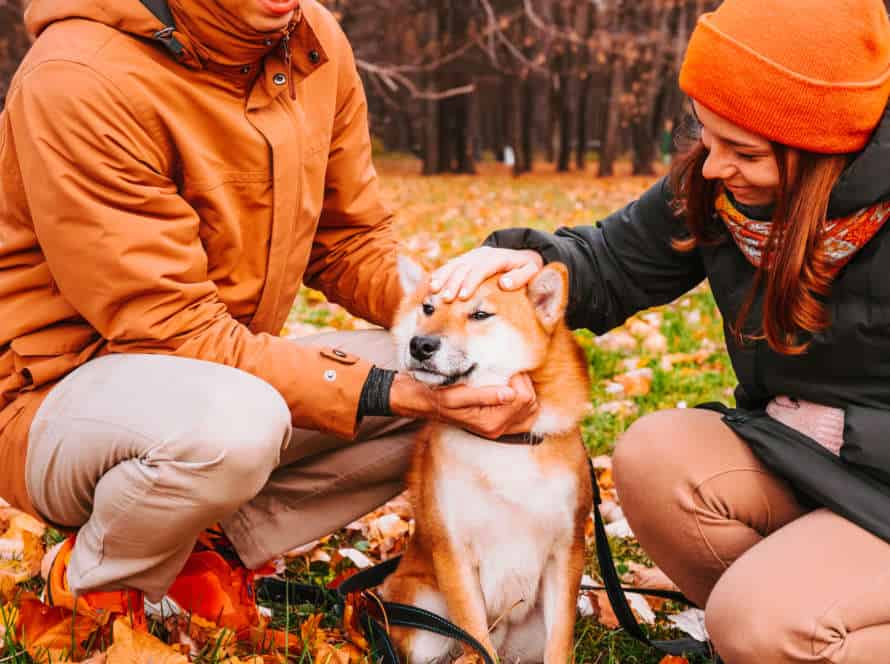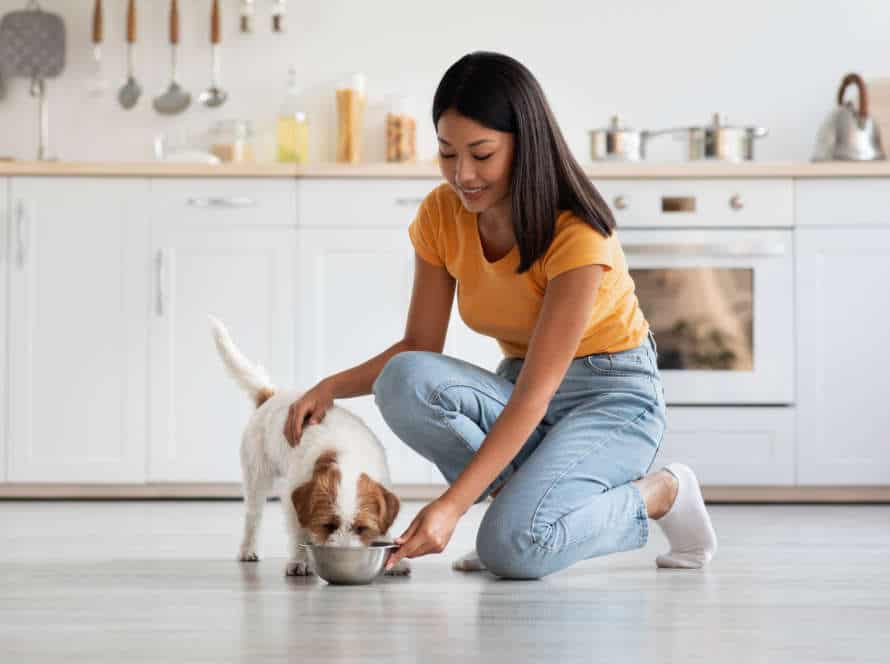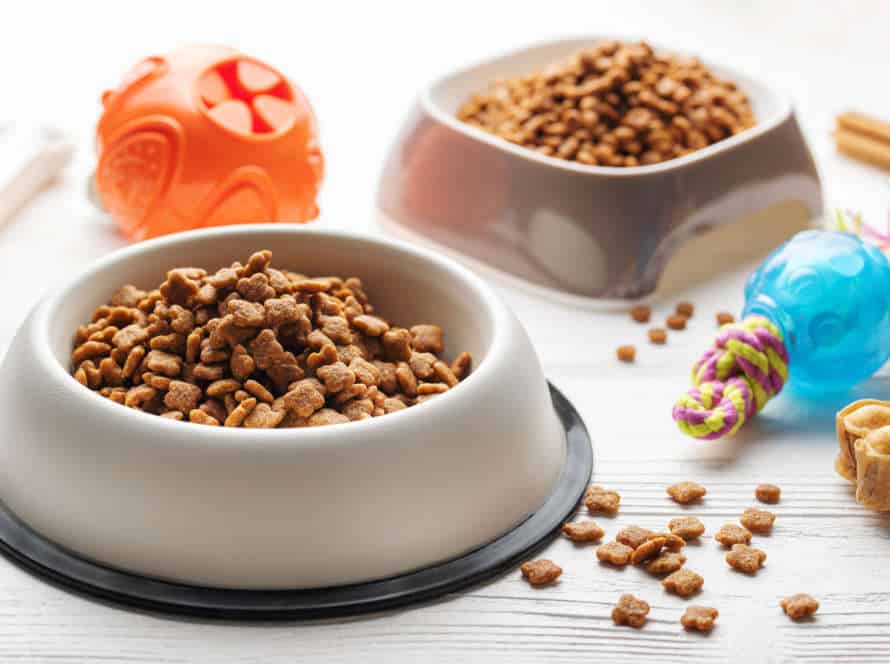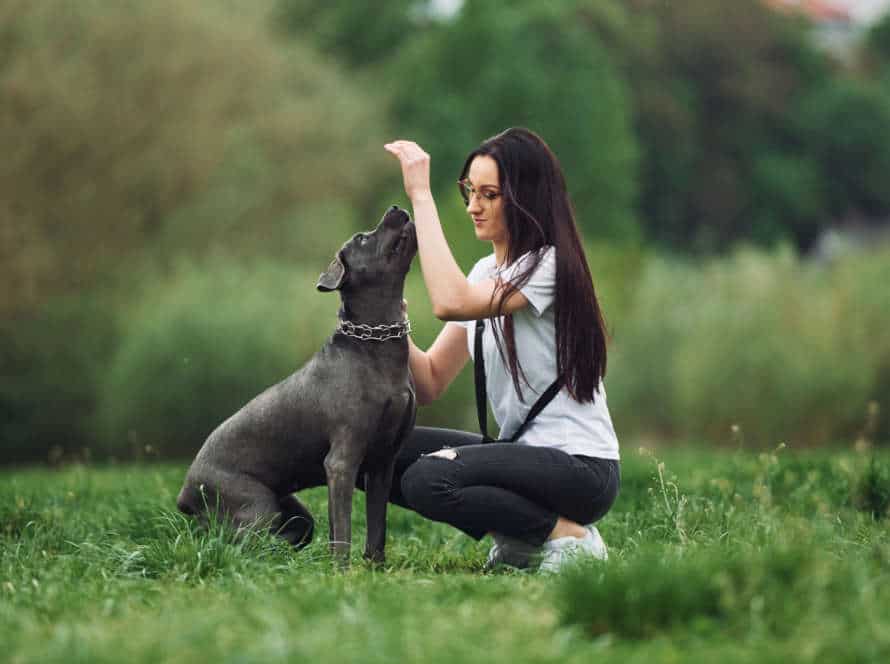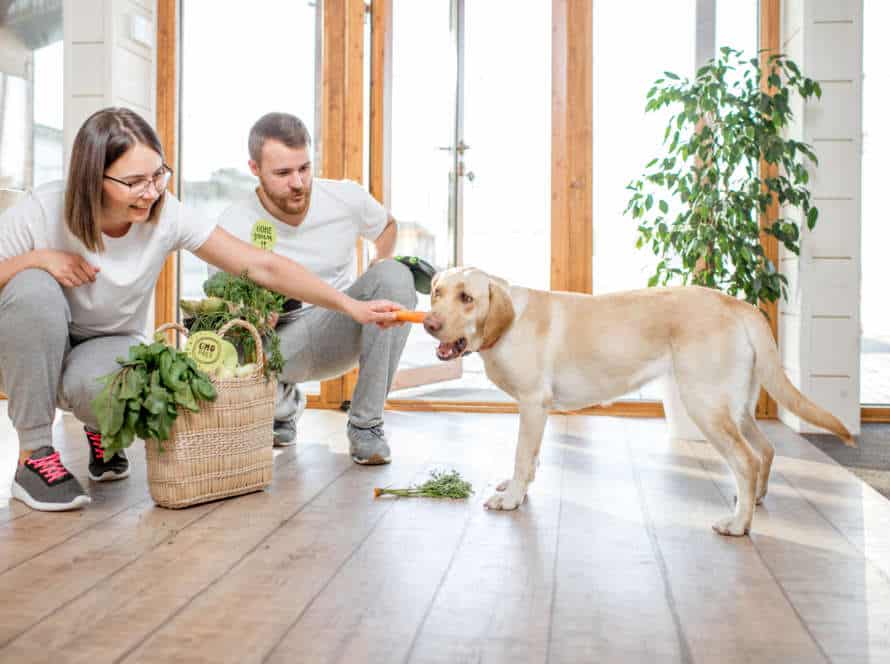Unlock Your Dog’s Best Behavior with Positive Reinforcement Techniques
Positive reinforcement? Yes! It’s an effective and kind way to get the best from your pup. Rewarding good behaviour and ignoring bad behaviour encourages the pup to do more of what is desired. Praise, treats and toys are all positive reinforcement techniques.
- Clicker Training: Use a clicker to mark good behaviour and reward with a treat or toy.
- Treat Training: Give treats for completing tasks and desired behaviour.
- Praise Training: Verbal praise for good behaviour.
- Toy Training: Toys to reward play and fetching.
Keep using positive reinforcement techniques. It will help the pup learn new behaviours and develop positive habits. Result? A well-trained, well-behaved pet.
Understanding Positive Training
Positive reinforcement training is a top choice for teaching your pup the right things. It works by rewarding your dog for desirable behavior, so they know this action will result in a reward. Studies have found positive reinforcement to be more successful than coercive methods such as physical punishment. If you want to get the best out of your pup, understanding why and how positive reinforcement works is the answer.
What is Positive Reinforcement
Positive reinforcement is a training method. It encourages desired behaviors in dogs by giving them something they like. The aim is to get them to repeat these desirable behaviors.
Rewards can include food treats, verbal praise, physical affection or playtime. To be successful with positive reinforcement, rewards must be given quickly and consistently. This helps the dog understand what behavior is expected.
Positive reinforcement is a humane, safe and effective way to train. With patience, consistency and the right techniques, your pup can learn commands and tricks, while strengthening the bond between you two.
The Importance of Positive Reinforcement
Positive reinforcement is a great way to get the best out of your pup. Instead of punishing or reinforcing bad behavior, reward them when they behave well. Here are some reasons why it’s essential:
- Strengthening the bond between you and your pup.
- Building trust and confidence.
- Encouraging good behavior and reducing bad behavior.
- Increasing your pet’s motivation to learn.
- Improving mental and emotional wellbeing, and reducing stress and anxiety.
Positive reinforcement will result in a happier and healthier dog. A tip: stay consistent, use it right away after they act well – to make it really effective.
The Benefits of Positive Reinforcement
Positive reinforcement is an awesome way to train your pup. It uses rewards, not punishment, to promote good doggy behavior. There are many benefits for both you and your pup:
- Building a bond – Positive reinforcement training strengthens the bond between pet and owner, based on trust and respect.
- Boosting confidence – Consistent rewards for good behavior will build your pup’s self-confidence.
- Encouraging better behavior – When your pup gets rewards for their good choices, they’re more likely to do it again in the future!
- Reducing stress – Positive reinforcement is less stressful for dogs than punishment-based techniques, reducing fear and anxiety.
- Creating a peaceful home – By rewarding good doggy behavior, you can make your home a harmonious place where your pup is happy and well-behaved.
So, next time you want to train your pup, use positive reinforcement for an effective and humane result!
Basic Training Techniques
Positive reinforcement is a great way to teach your pup! Give a treat or a game when they do something you asked. Gradually increase the difficulty of tasks and remove treats. This article talks about the basics of positive reinforcement training. It can help you get the best out of your dog!
Sit
Sitting is an essential skill for dogs to learn. It can be used as a basis for more advanced commands using positive reinforcement. Here’s how to do it:
- Hold a treat close to your pup’s nose.
- Move your hand up, causing your dog’s bottom to lower.
- As soon as they’re sitting, say “sit” and give them the treat.
- Give lots of praise too!
- Be persistent, rewarding them each time.
- Eventually, they’ll associate the command with the action, making it easier to teach them more complex behavior through positive reinforcement.
Stay
Positive reinforcement is the key to unlocking your pup’s best behavior and creating a strong bond between you two. Here are some tips to get you started:
- Reward good behavior with high-value treats like sitting or staying on command.
- Use a clicker or a verbal marker to signify that they’ve done something right.
- Be consistent – use the same commands and rewards for every training session.
- Keep the sessions short – no more than 10-15 minutes per go.
- End on a positive note with lots of praise and treats.
With patience and practice, your pup will be well-behaved and keen to please you.
Come
“Come” is an important command for any pup. Positive reinforcement works best when teaching it. Here’s how:
- Choose a quiet, distraction-free spot for training.
- Call your dog’s name, then say “come” in a cheerful voice.
- When your pooch comes to you, use a clicker or reward word (e.g., “good” or “yes”). Then praise or give a treat.
- Little by little, increase the distance between you and your pup. Use the same command and reward system.
- Be patient and consistent. Practice the command every day till your dog has it mastered.
Tip: Always use positive reinforcement when training your pup. This will help build a strong bond.
Advanced Training Techniques
Dogs are amazing creatures! With proper training, they can learn lots of skills. Positive reinforcement-based training is the most effective way to teach your four-legged pal. We’ll explain why this technique works and how to use it with your pup.
Teaching Tricks
Teaching tricks to your pup is a fulfilling journey! Not only does it bring you two closer, but it helps them gain useful abilities. Positive reinforcement is a great way to get the best out of your furry friend and teach them new skills.
Here are some advanced training tips:
- Shaping: Reward their progress as they learn a desired behavior until they perfect it.
- Targeting: Teach them to touch an item like your hand or a toy with their nose or paw.
- Capturing: Reward them when they perform a wanted behavior, like sitting or lying down, without prompting.
With these techniques, your dog can learn complex tricks such as playing dead, rolling over, and fetching particular items. Always use positive reinforcement like treats, compliments, or playtime to reward their progress and never use physical punishment.
Hand Signals
Hand signals are a must for advanced dog training. They help to get the best possible behavior out of your pup through positive reinforcement techniques. Here’s a list of the most popular hand signals used in dog training:
- Sit – Hold hand out, palm up, and move it up.
- Stay – Hand out, palm forward, stay still.
- Down – Out, palm down, move toward the ground.
- Come – Out, palm at you, move towards chest.
- Heel – Out, palm at body, move to hip.
Repeat the signals and reward good behavior with treats or kind words. With practice, your pup will be able to respond to your hand signals reliably.
Verbal Commands
Verbal commands are a must for positive reinforcement. They help you and your pup understand each other.
Start with the basics: “sit,” “stay,” “come,” and “down.” Then try “wait,” “leave it,” and “heel.”
Introduce the new command in a calm, distraction-free spot. Say it and add a hand signal. Give treats and praise when they obey.
Gradually increase distractions. Eventually, remove the hand signal so they only respond to the verbal command.
Positive Reinforcement for Behavior Issues
Positive Reinforcement training uses rewards that dogs like, such as treats, praise, or games. This technique is based on the fact that animals, including dogs, respond to things they find enjoyable.
Let’s look at popular positive reinforcement approaches to encourage your pup’s good behavior.
Separation Anxiety
Separation anxiety can be a distressful experience for both dogs and their owners. Using positive reinforcement can be effective in managing separation anxiety. Here are some tips:
- Practice short separations. Start with short durations and gradually increase.
- Use treats and praise for desirable behavior such as calmness and quiet when alone.
- Do not reward anxious behavior.
- Give your pet a safe and comfortable environment. Provide them with a designated area like a crate or room with familiar items.
- Consult a professional if needed. If the anxiety is excessive, seek guidance from a dog trainer or behaviorist.
By using positive reinforcement, you can help your pet feel more relaxed and build a better relationship.
Jumping on People
Jumping on people is a behaviour issue many dogs have. To fix it, use positive reinforcement! Here’s how:
- Don’t shout, or push your pup away. Instead, turn away or tell them to ‘sit’.
- Reward them with treats, petting, or kind words when they sit calmly, or when they approach you with all four paws on the ground.
- Everyone in your house needs to use the same methods.
- Don’t expect results overnight. It takes time for behavioural changes to stick.
Positive reinforcement is a great way to build a strong relationship with your pup, and teach them good habits!
Barking
Barking is natural for pups, but too much or loud barking can sometimes mean behavior problems. Positive reinforcement can help get the best behavior from your dog and reduce barking. Follow these tips:
- Figure out why they bark.
- Give treats and compliments to reward good doings.
- Teach them to obey a “quiet” command and treat them when they stop barking.
- No punishment or negative reinforcement. It can worsen the problem and make your relationship with your pooch worse.
- If barking persists or you need help with positive reinforcement, get help from an expert.
Pro tip: Patience and time are needed for positive reinforcement to work, but it’s a humane and useful way to control your pup’s behavior.
Reinforcement Tools for Training
Positive reinforcement can train your pup quickly and easily. It builds good habits and keeps them motivated. Here’s what you need to know: reinforcement tools can help your furry friend learn. These include treats, verbal praise, petting, and toys. Use these techniques to make your pup’s training sessions positive and fun!
Clickers
Clickers are a useful reinforcement tool for dog training. They are small plastic devices that make a distinct clicking sound when pressed.
To use them, start by getting your dog’s attention and click while giving them a treat or reward. Do this until they understand the click means they get a reward. Then, click to mark desired behaviors or actions, like sitting or lying down, and give a reward immediately. As your pup gets better, reduce the frequency of treats.
Clickers help you communicate with your pup and shape positive behavior.
Treats
Treats are a great aid for positive reinforcement training. With the right use, they can inspire and honor your pup’s good deeds, making training fun and successful. Here are some tips:
- Pick small and soft treats that your dog can gobble up quickly.
- Choose treats your pup loves, and only use them during training.
- Each time, attach a specific command or action to the treat, so your pup knows what they are being rewarded for.
- Change the type and quantity of treats you use, so your dog doesn’t get bored or overindulge.
- As your pet gets more used to good behavior, lessen their treat rewards, and replace treats with verbal praise and pats.
Pro Tip – Positive reinforcement training needs time and patience, but it can be enjoyable for you and your pup!
Toys
Training your pup can be quite tough. But, with the right techniques and tools, it can be a piece of cake! Toys can be a great way to encourage your pup’s good behavior.
Here are some examples of toys that can help with training:
- Kong toys: Filled with yummy treats, these toys can keep your pup focused and give them something to do when anxious or bored.
- Tug toys: Perfect for teaching commands like “drop it” and gentle play.
- Puzzle toys: Keep your furry friend mentally engaged and entertained when they’re alone.
By using positive reinforcement techniques and toys, you can have a strong and loving bond with your pup that lasts forever.
Tips for Successful Positive Training
Positive reinforcement is a strong way to train your pup. To support your pup’s learning and growth, you must understand how to use it correctly. If your pup needs to learn to stay, shake or do something else, positive reinforcement is the perfect way! Here are some tips to help you use it successfully:
Consistency
Consistency is the key to successful, positive dog training. Establishing consistent routines helps encourage good behavior and stop bad habits from forming. Here’s how:
- Set expectations for desired behavior. Reward good behavior with treats or praise – every single time.
- Use the same commands and cues for each behavior. Everyone in your household should be on the same page.
- Patience and consistency is key when it comes to training sessions. Keep them short and positive.
- Provide lots of exercise, mentally stimulating activities and socialization to stop boredom, anxiety and destructive behavior.
By being consistent and following these tips, you can unlock your dog’s best behavior with positive reinforcement techniques.
Timing
Timing is key for positive reinforcement training of dogs. By timing rewards and cues, you can communicate with your pup and have successful positive training.
Here’s how timing matters:
- Reward fast: When teaching your dog a new behavior, reward them within one second of their response. This helps them link the behavior to the reward and know what you want.
- Use markers: Timing also applies to using markers to communicate. Use something like “yes” or a clicker directly after the desired behavior to show they did right and they’ll get a reward.
- Avoid punishment: Timing is also important when avoiding punishment. If your dog misbehaves, don’t punish them afterwards, as it won’t help them learn. Instead, direct their attention to the desired behavior and reward them when they do it.
By being aware of timing, you can make positive reinforcement training work better and help your dog be their best.
Pro Tip: Be patient! Training takes time and repetition, and each dog learns differently.
Praise
Praise your pup! It’s an important part of positive reinforcement training.
Here’s how to give effective praise:
- Be quick! Praise your dog straight away for good behaviour.
- Be excited! Use a cheerful, high-pitched tone to show your dog how pleased you are.
- Be exact! Tell them exactly what they did that you’re praising.
- Be regular! Praise them often to create good associations.
By sticking to these tips, you’ll have a happier, healthier relationship with your furry friend – and better behaviour too!
Common Misconceptions of Positive Reinforcement Training
Positive reinforcement is a popular dog training method, but it can be misunderstood. People often think it’s just about treats, or that it’s less efficient than other methods. The truth is, there’s more to it than that – and it can be very successful when used correctly. Here are some of the most common misconceptions about positive reinforcement:
Spoiling Your Dog
Positive reinforcement techniques aren’t the same as “spoiling” your pup. Spoiling is about giving into all their demands and not setting boundaries. Positive reinforcement is about reinforcing the good behavior and teaching them what you’d like them to do, not what you don’t.
Misconceptions about positive reinforcement include:
- It’s permissive: Positive reinforcement isn’t permissive or indulgent. It’s about setting clear limits and showing your dog what is acceptable and what isn’t.
- It’s bribery: Positive reinforcement isn’t bribery – it’s about rewarding your dog for doing a great job or displaying the desired behavior.
- It’s only for puppies: Positive reinforcement can be used with dogs of any age or breed. It’s never too late to start!
Positive reinforcement can unlock your dog’s best behavior and strengthen the bond with your furry friend.
Difficulty with Commands and Control
A lot of people mistakenly think that positive reinforcement training leads to issues with commands and control. But, this is not true. In fact, it can help build control and a strong relationship with your pup!
Through positive reinforcement, you reward your dog for good behavior and ignore the bad. In time, they will understand what you want and work to please you to get the reward.
This technique works on all ages and breeds and helps create a trusting and respectful bond between you and your pup.
Positive reinforcement isn’t permissive or indulgent training; it’s a gentle and efficient way to teach your pup the right behaviors. Use this strategy to bring out the best in your pup and to make the relationship healthy and happy.
Limited Effectiveness.
Positive reinforcement training is great, but it’s not enough. It needs the right understanding and implementation.
Patience, consistency and timing are key. Plus, you need to provide constructive feedback, gentle corrections and redirection.
For best results, seek professional guidance.
Remember, training your pup takes dedication and patience to ensure their best behavior.
Frequently Asked Questions
1. What is positive reinforcement?
Positive reinforcement is a training technique that relies on rewarding desirable behaviors to encourage their repetition. It involves offering your dog something they enjoy or removing something they dislike immediately after they perform a good behavior, thereby increasing the likelihood that they will repeat that behavior in the future.
2. How does positive reinforcement differ from punishment-based training?
Punishment-based training involves reprimanding your dog for undesirable behaviors, such as by scolding, yelling, or physical force. While this may work in the short term, it can damage the relationship between you and your dog and can even lead to increased aggression or anxiety. Positive reinforcement, on the other hand, focuses on encouraging good behavior and cultivating a positive relationship between you and your dog.
3. What types of rewards can be used in positive reinforcement?
There are many types of rewards that can be used in positive reinforcement, including food treats, toys, verbal praise, petting, and even a chance to play with other dogs. The most important thing is to choose a reward that your dog finds highly desirable and that motivates them to repeat good behaviors in the future.
4. Can positive reinforcement be used for all types of behavior?
Positive reinforcement can be used for most types of behavior, as long as the behavior is one that you want to encourage. Some behaviors, such as aggression or fear, may require specialized training techniques and the help of a professional trainer.
5. How long does it take to see results from positive reinforcement training?
The time it takes to see results from positive reinforcement training can vary depending on your dog’s personality, the intensity of the behavior you’re trying to train, and your consistency in practicing the technique. However, in general, positive reinforcement training tends to yield faster and longer-lasting results than punishment-based training methods.
6. Can positive reinforcement training be used with older dogs?
Yes, positive reinforcement training can be used with dogs of any age, including older dogs. In fact, many older dogs respond well to positive reinforcement training because it allows them to build confidence and trust in their owners. However, it’s important to keep in mind that older dogs may have physical limitations or health concerns that need to be taken into account during training.

